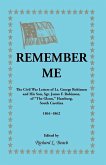Most fort histories end when the military lowers the flag for the last time and the soldiers march out. In contrast, Fort Robinson-occupied and used for more than fifty years since its abandonment by the U.S. army-has taken on new roles. This book recounts the story of this famous northwestern Nebraska army post as it underwent remarkable transformation in the first half of the twentieth century. In the early 1900s, Fort Robinson hosted the last of the African American buffalo soldiers to serve in Nebraska. In the 1920s and 1930s the fort procured and issued thousands of horses for the U.S. army's largest remount depot. During World War II, Fort Robinson housed the army's primary war dog training center and served as a major internment camp for German prisoners of war. After 1948, Fort Robinson became a beef research center and is now the state's premier park. Fort Robinson and the American Century, 1900-1948, is based on more than twenty years of archival research as well as the personal recollections of the men and women who served at the fort. More than ninety photographs and five maps supplement the narrative.








